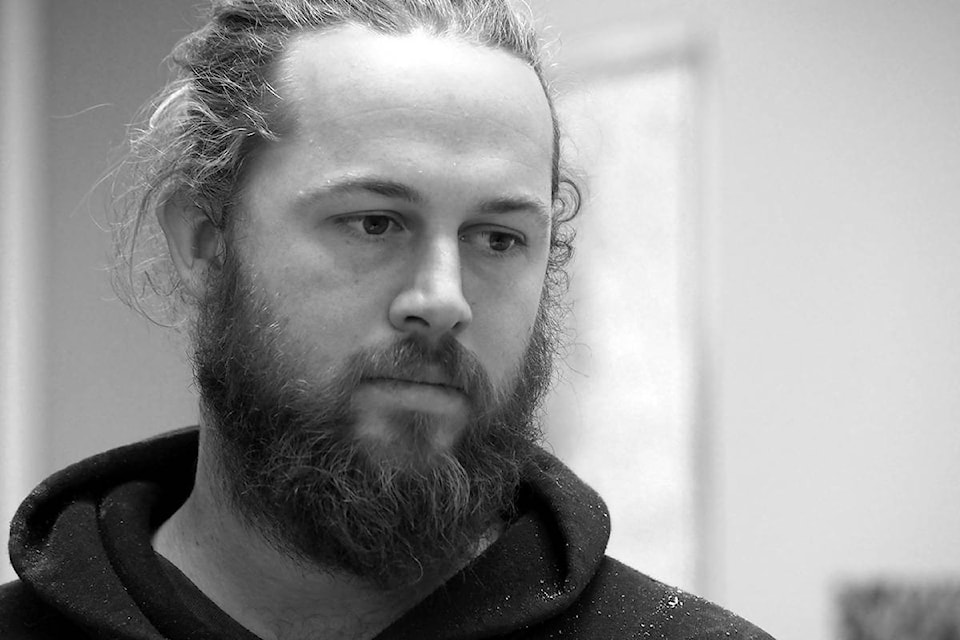Laborers in Sooke spend their days working long hours and building houses for local buyers. Unfortunately an alarming amount of these workers don’t even have a real place to call home for themselves. Ironic isn’t it?
Construction worker Andrew Tyrrell, along with his girlfriend, three children and two dogs, lived in a 200 square-foot trailer in his friend’s yard, because they were unable to find anywhere else to rent.
“Getting in affordable housing with kids and pets was a really big challenge,” Tyrrell said.
Winter was the hardest time for the family because of the small amount of electricity produced by a propane generator. It resulted in problems with condensation and mould, and they had to wash their clothes at a laundromat. They often didn’t have hot water.
Herb Haldane, Tyrrell’s employer, said he knows of many people working with him that are in similar situations, and are forced to live in campers or their cars because they don’t have anywhere else to go.
“You can’t tell them to go find a place to rent when there’s no where available,” Haldane said.
He said in the past year the housing problem has skyrocketed, and he knows about eight to 10 workers who don’t have a proper place to live.
“I even have one worker that lives in our tool shed,” Haldane said. “It’s not that these people don’t have the ability to rent, it’s that there’s nowhere to rent.”
Tyrrell said for a while his family looked at renting a one-bedroom home because that was all that was available and affordable.
“We even offered people three months rent before we moved in and we didn’t get any takers,” Tyrrell said.
“Sometimes there would be like 30 people applying for the same house, and renters would rather have a couple move in than a family of five with pets.”
Recently, Tyrrell and his family were able to find a house, but he knows a lot of people in the area who aren’t so lucky.
“I’ve lived here my whole life, and I’ve never seen anything like this in Sooke,” Haldane added.
He attributes this crisis to the price of real estate being so high that people are forced to buy houses more expensive than they can afford and then putting suites in them to help cover the cost.
In turn, the suites are rented out at a much higher price to pay off the mortgage, and the younger generation is unable to afford them.
“The young generation is being kicked to the curb,” Haldane said.
He said workers are showing up in the morning with their clothes soaking wet and having to dry them off by a fire or at the laundromat before they start their day.
“They’re hard workers and they deserve better,” Haldane said. “I’m disappointed that it comes down to this. We see these people walking around, we see them struggling, and we look past them. We’ve done a lousy job of leadership and a lousy job of governing up until now, because we aren’t setting the table for the younger generation to be successful when they have nowhere to live.”
Haldane suggested to district council last week to allow more houses on single house lots, or allow landowners to rent out their yard for campers, so they can share taxes and expenses to make it more affordable.
“People can live more communal and share common areas,” Haldane said. “I think the younger generation is adaptable and they would much prefer to share a space with a few other people than have nowhere to go.”
He said the current limit on lots is 350 square metres and allows one house on it with a suite, and he thinks there should be zones where lots like this should hold a bunch of mini homes.
“We as Canadians are used to having a bunch of land and the ability to build a house where we want, and over the years we created all these rules for not wanting houses close together, but it’s an old way of thinking and the standards are impossible to meet anymore,” Haldane said.
He added there is a need for more density, to service more people, and get the most “bang for your buck” out of a lot.
“I don’t know what the solution is, but I do know that a .6 vacancy rate is something we can’t deal with,” Haldane said. “These people are human beings and deserve a place to go.”
